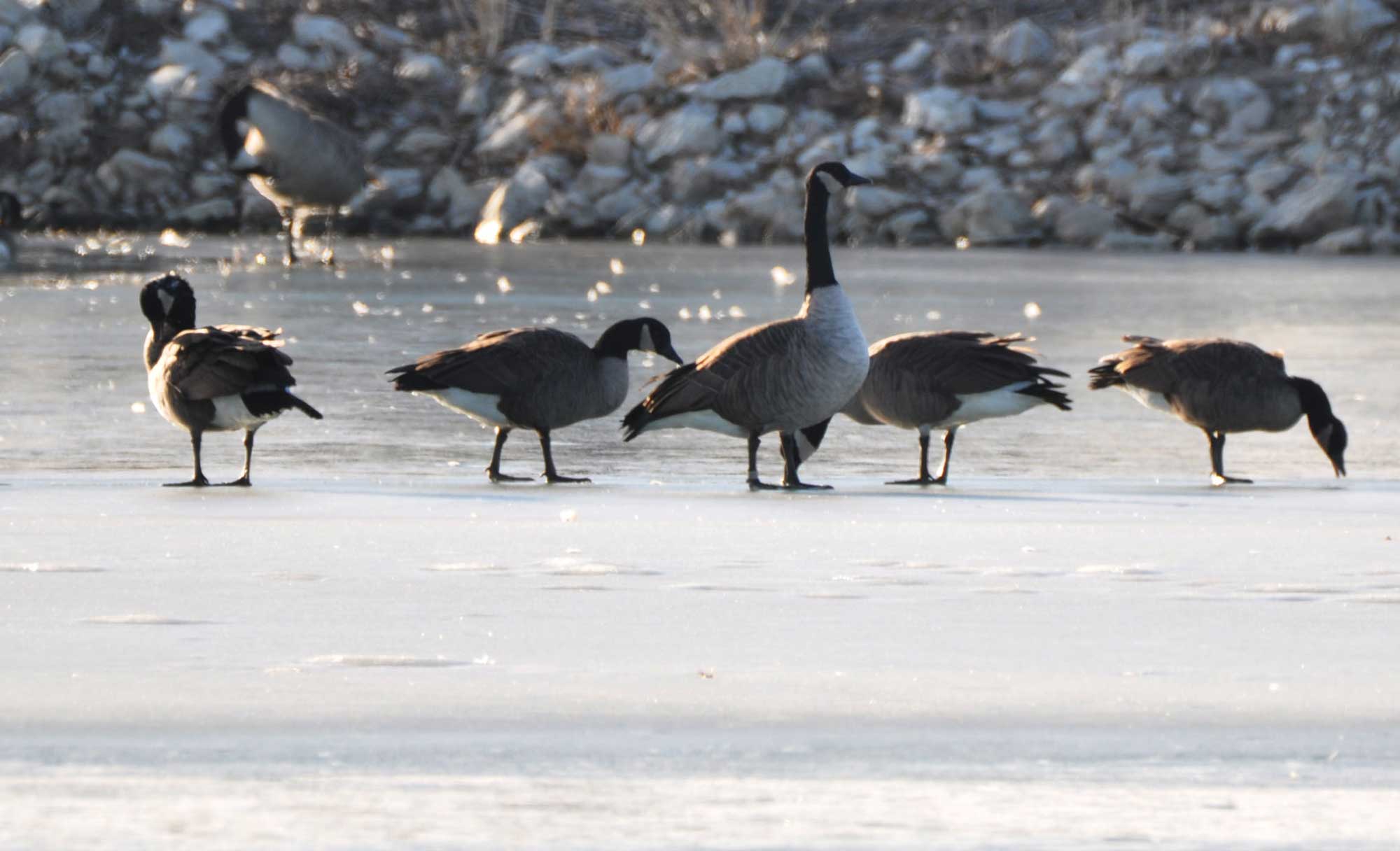Nature curiosity: Why don't birds' feet freeze?

A quick glance at a winter weather forecast is enough to make most of us grateful for our warm homes and thankful for those who work outdoors in these brutal conditions.
For the wildlife in our communities, there's no escaping the harsh realities of winter. In fact, many of these animals must spend time each day out in the snow and ice to find the food necessary for survival. Take Canada geese, for instance. They are a familiar site at our local lakes and ponds, whether they are frozen solid or not. How do they do it?
Like people and all mammals, birds are warm-blooded. Their body temperature remains constant — about 106 degrees, according to the Audubon Society. To maintain their body heat in freezing temperatures, their bodies have developed several mechanisms.
For geese, ducks and other waterfowl that spend time on ice or in cold water, keeping their legs and feet warm is essential for survival. These animals rely on a vascular system designed with this in mind. The arteries and veins in the legs and feet of these birds are close together, which allows the blood to be warmed and cooled quickly, the Smithsonian reports.
As warm, oxygenated blood leaves the heart in arteries moving toward the bird's feet, it passes in close proximity to veins returning oxygenated blood back to the heart. This allows for a concurrent heat exchange. The exchange allows the warmth from the arterial blood to increase the temperature of the blood returning in the veins, which is colder after circulating to the bird's extremities, Popular Science reports.
This heat exchange isn't just used by birds. Squirrels and other mammals that spend time in the snow also keep warm this way. And the science behind it is the same as how fish exchange oxygen in their gills, according to Popular Science.
The heat exchange is just one way birds stay warm in winter. Many birds have a winter plumage with more feathers to better insulate their bodies, the Audubon Society reports. Some species, such as finches, add fat in winter to both better insulate themselves and provide an energy source.
Many small birds, though, can't bulk up too much because it would affect how they fly. For these birds, such as chickadees, shivering helps them stay warm. Shivering in birds isn't quite like it is for humans. When birds shiver, they are able to activate particular muscle groups that work in opposition to one another. According to the Audubon Society, this causes muscle contractions that allow the birds to better retain their body heat.
